7 Nights Fethiye Yacht Charter Itinerary
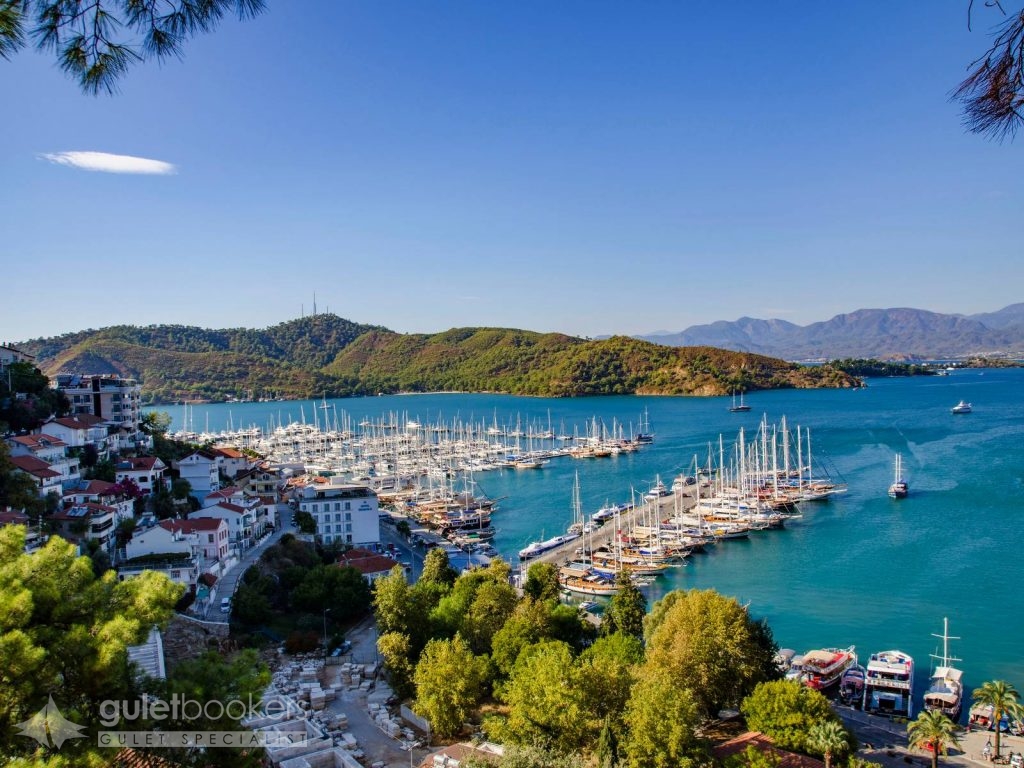
Fethiye, with its attractive mix of nature, history, sea, and sunshine, is a good place to set out on an enjoyable trip along the Kekova blue voyage. To reach Fethiye, a district in Mugla in the South West of Turkey, by air you have to fly into Dalaman which is 40 km. away. There are other possibilities to get there if you would rather travel by road or sea. Fethiye is a well-known stop on gulet trips and is a renowned yacht harbor; it offers a variety of accommodation, restaurants and it is well equipped with stores for all kinds of supplies. Believed to have been founded by the sun God Apollo and took its name from one of his sons by his wife, a Lycian Princess, Telmessos (Fethiye) was a famous oracle center. That a priest from Fethiye accompanied Alexander the Great throughout the whole of his Asian campaign is testament to the renown in which priests from the town were held.
Fethiye was almost completely destroyed by an earthquake that occurred in the 1950s. In the modern-day, it was founded on a plain behind the ancient city of Telmessos. The harbor, with its superb vistas, is from where yacht tours start. Amongst the places that you should definitely see in Fethiye are the Roman theatre, the rock-cut tombs on the hills that rise up behind the ancient city, the museum, and the harbor.
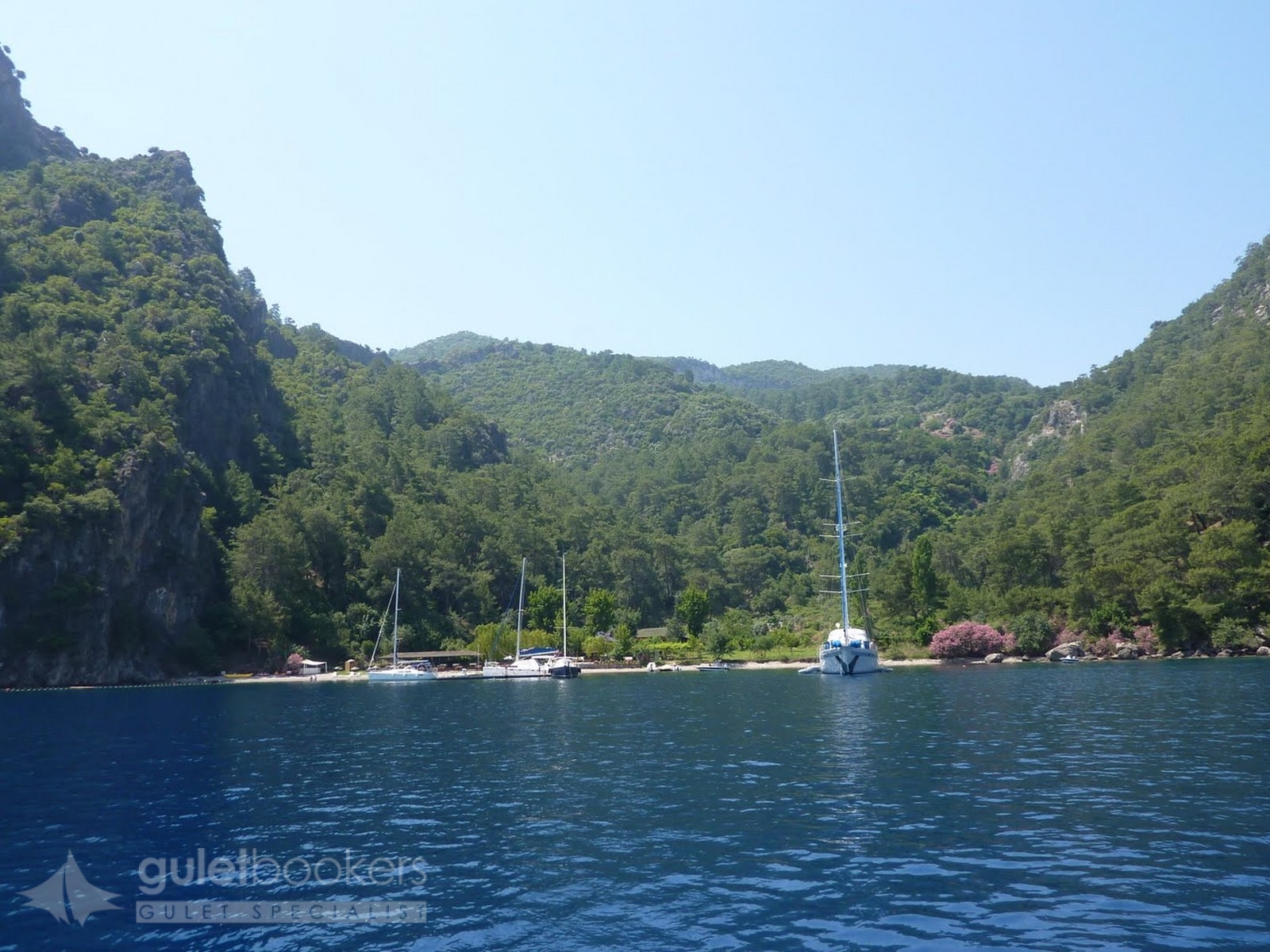
When you sail from Fethiye towards Oludeniz, before Iblis Point you go past Samanli, Kuleli, and Kalemya (the cove where the Hillside Holiday Village is located) and then comes Turunc Pinari and Sombeki Coves. The beach of Turunc Pinari is sandy and the sea is clearly beautiful. Sombeki is also among the most popular destinations for boat tours. On the way to Oludeniz, the really beautiful coves and islands follow each other, after you pass Iblis Point.
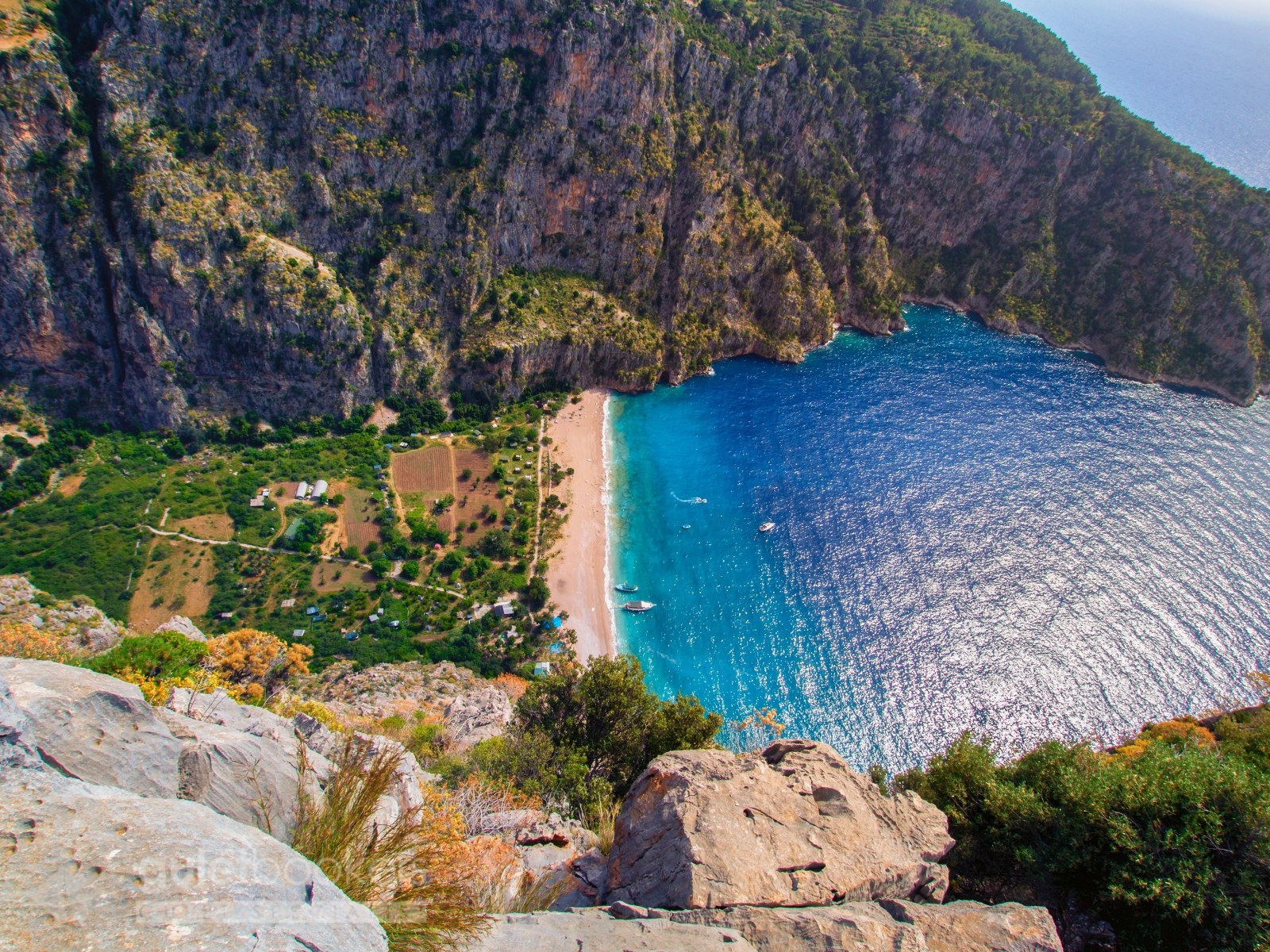
These are among the most visited sites for yachts that conduct daily tours from Fethiye or Oludeniz (Dead Sea). It is best known for its beach and the Kelebekler Vadisi (Butterfly Valley). The beach and the sand are beautiful.
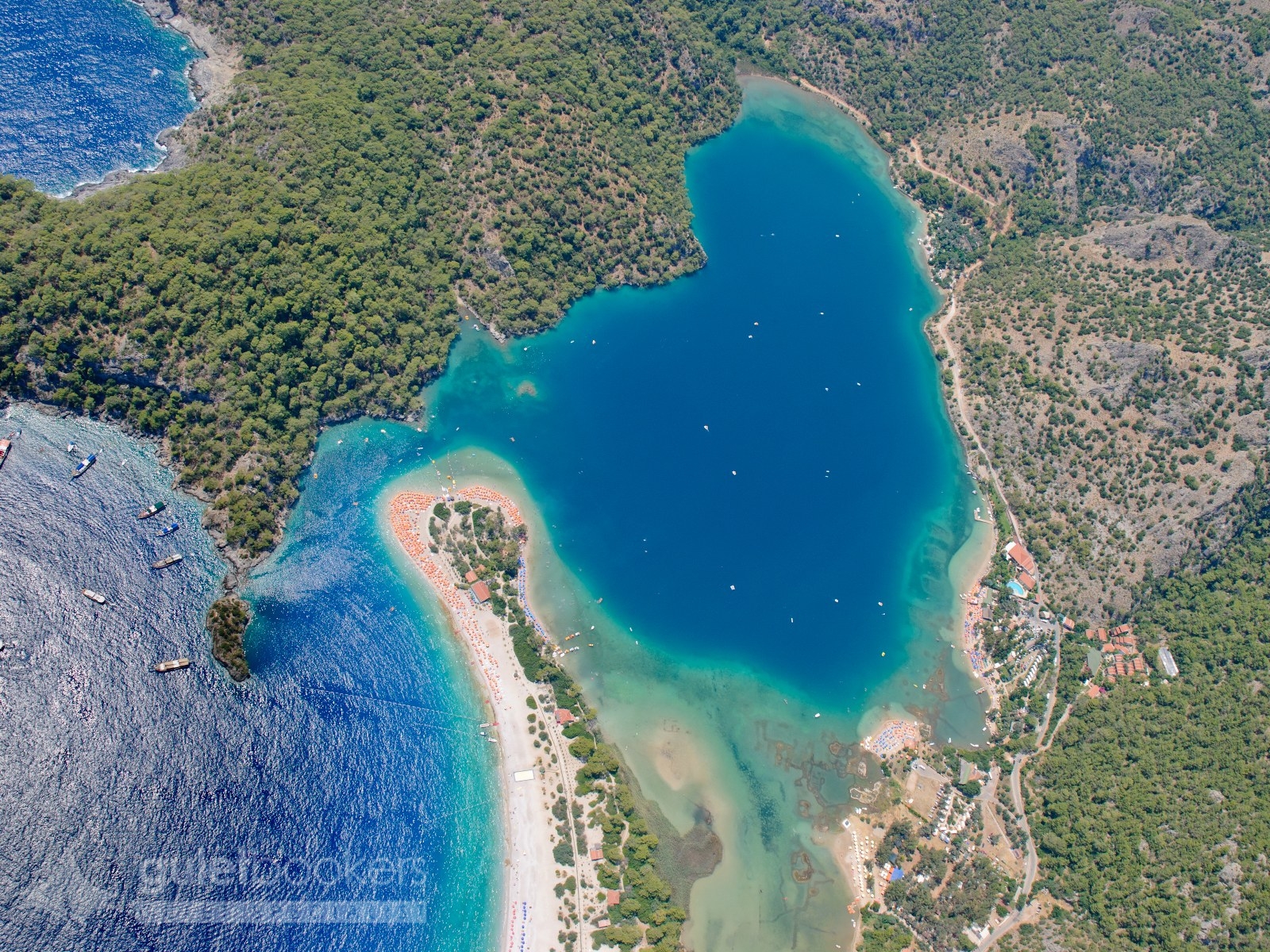
Oludeniz is as if it appears to be enchanting and lies still with no movement in its clear waters. There is nothing on the bottom of the lagoon but white sand. The reflection of the water and the sand bottom give it a turquoise color. On the surface are the reflections of the green pines and this enriches the impression of the turquoise color. Yachts are banned from entering Oludeniz lagoon itself but you can moor at the point of the cove and go by small boats or dinghy to Oludeniz, the golden sandy beach of Kumburnu, or Belcekiz.
At the end of the long Belcegiz Beach, the coastline curves inward, becoming Kidrak Cove. Nine hundred and fifty hectares of land around Oludeniz and the beach of Kidrak have been determined as a place under protection order and turned into National Parks. Construction in the area of Oludeniz lagoon and the Kidrak beach is banned and these sites are classified as special protected areas. On the beach, you have access to aqua sports such as parasailing and banana boats for those interested
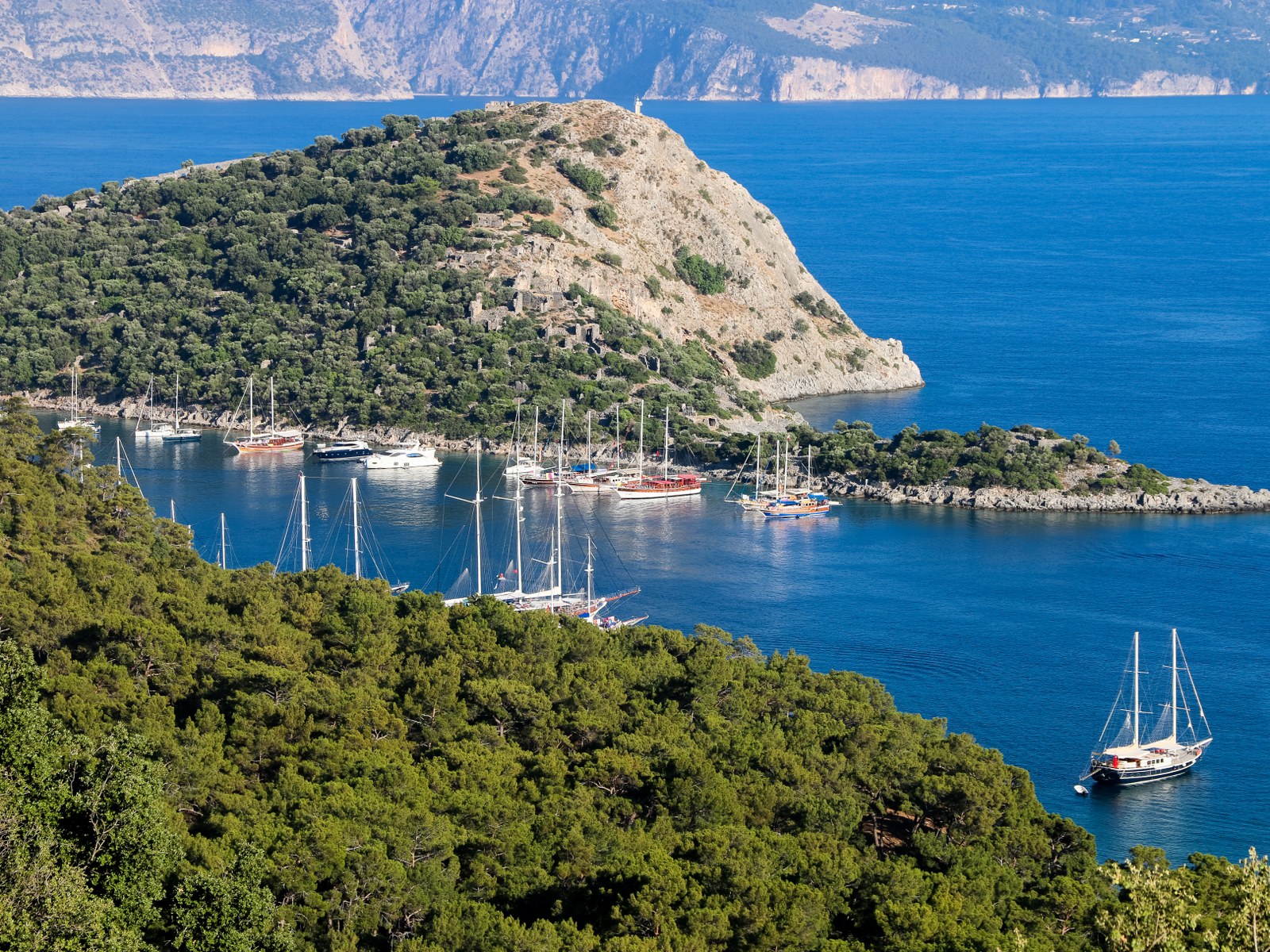
Gemile Island is just opposite Gemile Cove and beach. The former name of the island was St. Nicholas. On the island, there are remains of churches dated to the Early Christian era and the Byzantine period. The frescoes of the large churches are in good condition. On the seaside, there are the ruins of cisterns. The most interesting historical relic is the tunnel that links the two churches to each other. Some parts of the 500-m. long tunnel has collapsed. There are 17 stops in the staircase inside the tunnel. These are to represent the 17 points at which Christ halted while he was being taken to be crucified. As a result of an earthquake in 240-241 AD, some of the ruins have slipped beneath the sea, lying at two meters depth. In the summer months the tree-covered Gemile Cove and beach, being well sheltered, is frequented not only by boats/yachts but also by picnickers who come through Fethiye-Hisaronu-Kayakoy. The cove is four kilometers from Kayakoy village.
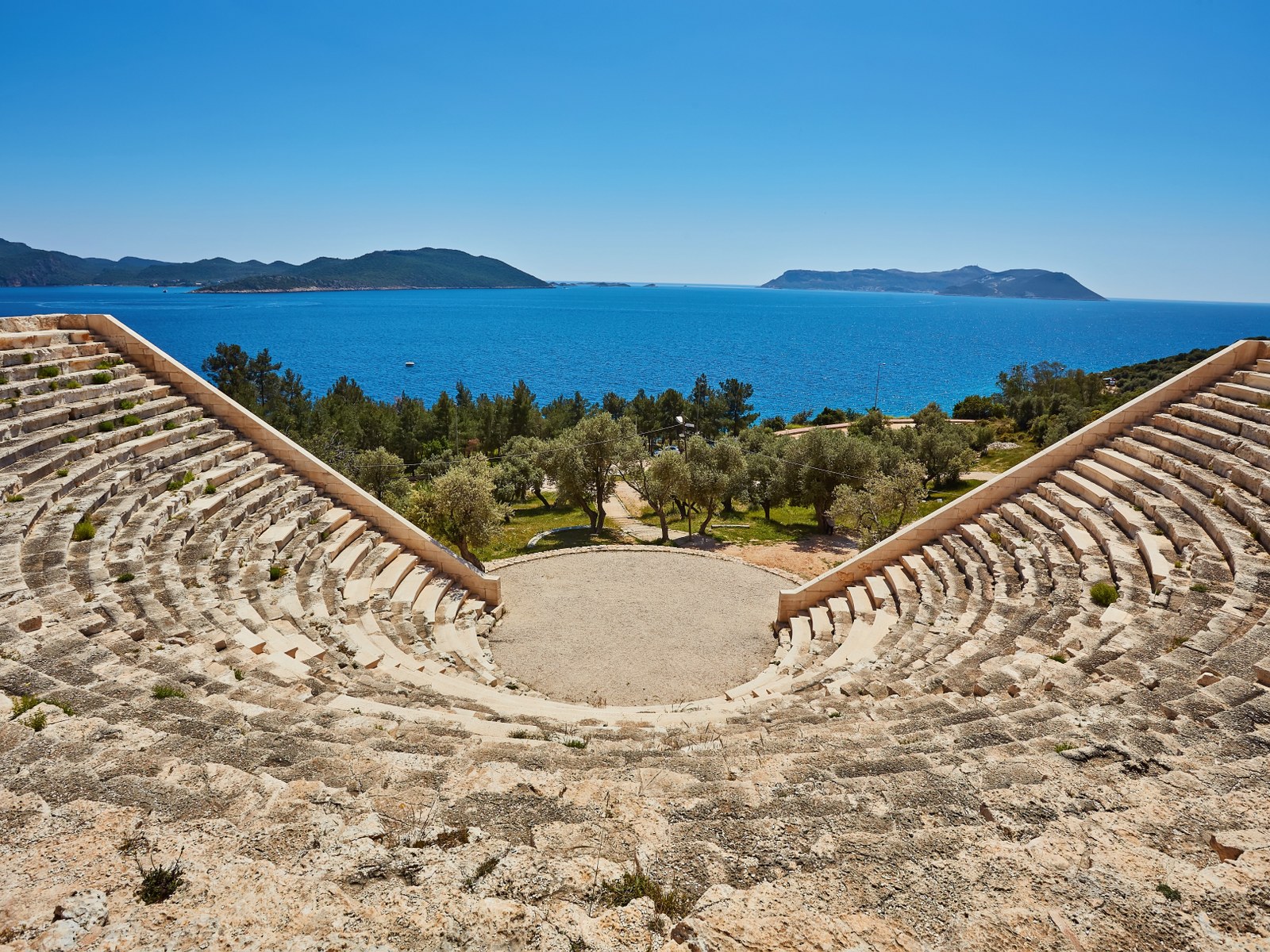
Kas was a port town in the Hellenistic period and is a small holiday resort today. Antiphellos means ‘opposite Phellos’ and Antiphellos was probably the harbor neighborhood of the town of Phellos in the mountains behind. Antiphellos is one of the oldest Lycian cities and its remains are scattered among the modem buildings of Kas. On the way to the Cukurbag peninsula, there is a well-preserved theatre on the right, with a spectacular sea view. Between the theatre and the harbor, there are foundations of a temple dating from the 1st century AD. At the end is Uzuncarsi, with its busy central shopping street, under an ancient plane tree you will find the Lycian sarcophagus that has become the symbol of Kas. A short walk leads up to the tombs carved in the rocks behind the town.
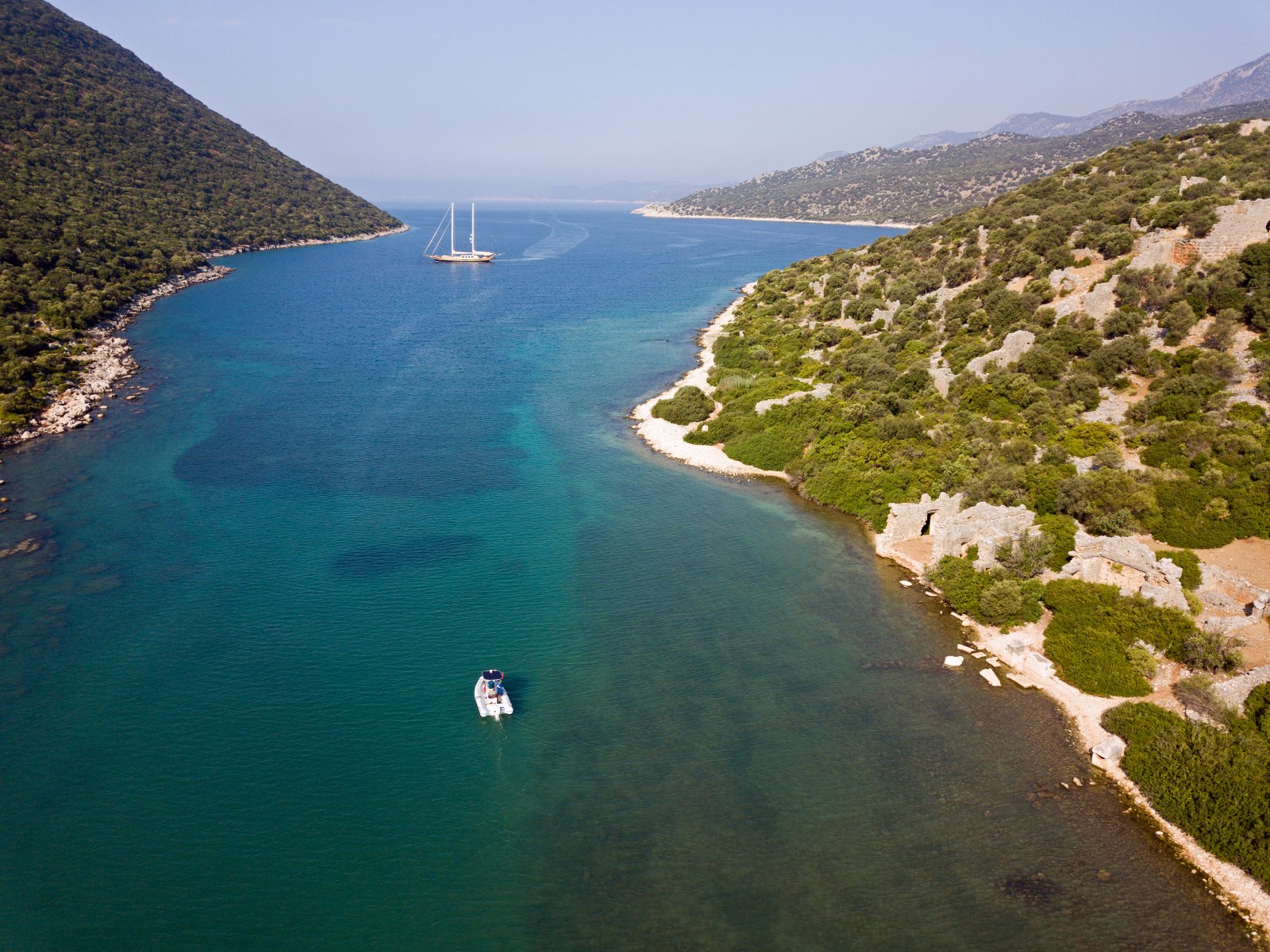
Sicakli Peninsula is between Kas and Kekova and, like Kalekoy, is a settlement that was partially submerged by the sea following an earthquake. From the sarcophagi and coins found in the area, the city appears to date back to the 4th and 5th centuries BC. The ruins are scattered, but Lycian tombs and the remains of the city wall can be seen. The submerged remains of the dock area about 15 meters from the shore.
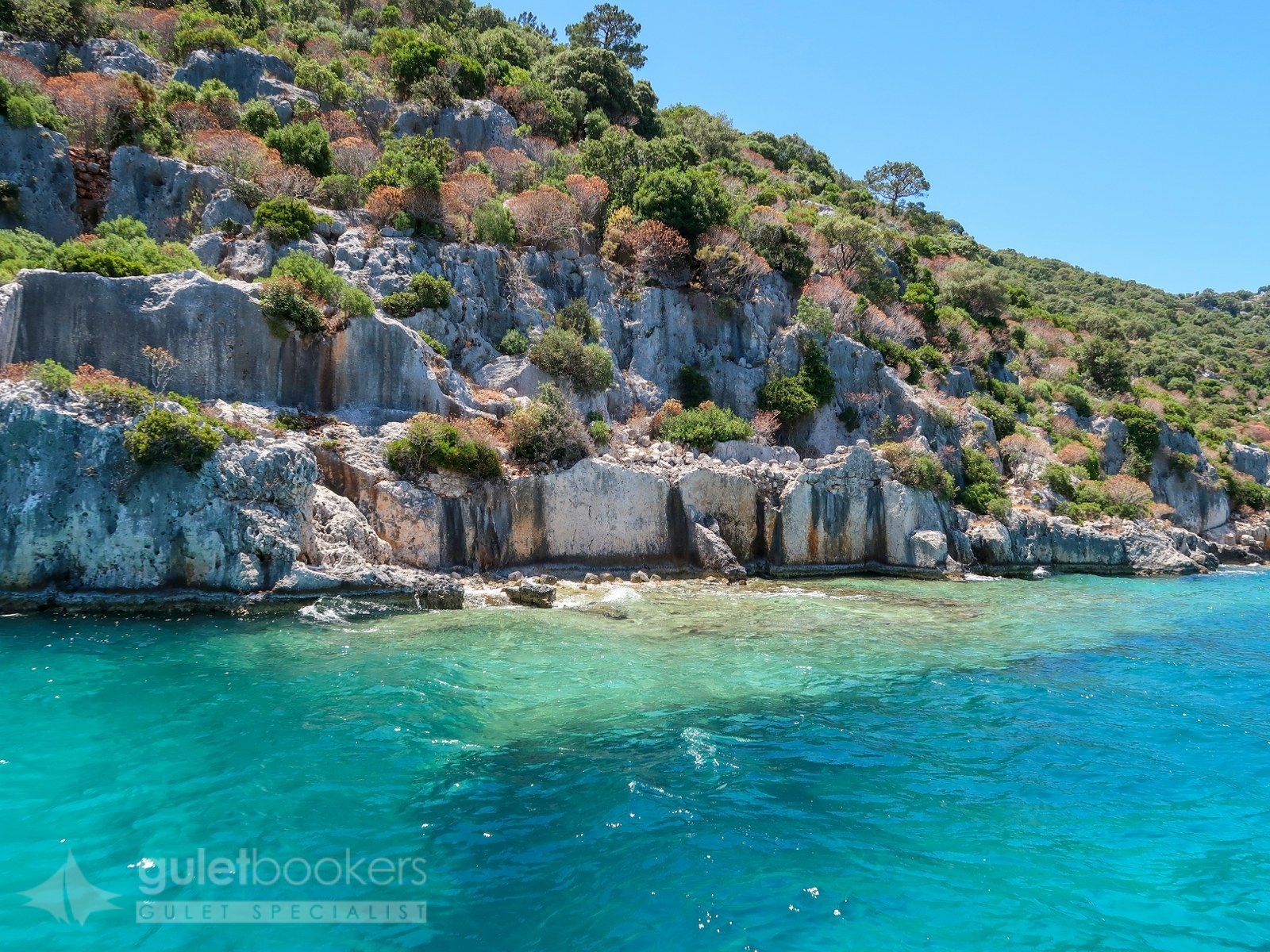
The Gulf of Kekova covers a large area. Settlement areas such as Kekova Island, Kalekoy, and Ucagiz are all within this region. It has some of the best diving and yachting spots in Turkey.
Kekova Island gave its name to the region. Even in rough weather, this is a calm spot as it is cut off from the open sea by Kekova Island. Its name in ancient times was Simena, the ruins of which are scattered from the port up to the hills and even in the sea. Those who walk up the hill to the theatre on top of the hill are met with a picturesque scene. There is no better spot to take a photo. Opposite to you, there is Kekova Island and on your right Ucagiz. There are Lycian rock tombs everywhere on the hill.
A visit around the shores of Kekova Island by yacht will give you a chance to see the ruins of a sunken city. The ruins of the ancient city that has sunken after an earthquake, can be seen with bare eyes as they lie at one to four meters deep. This is a very impressive sight. On the narrowest part of the island is the Tersane Koyu (Cove of the Shipyard), with the ruins of a church on the shore. Here the sea is like a swimming pool. The surface of the sea is as if embroidered with different tones of blues.
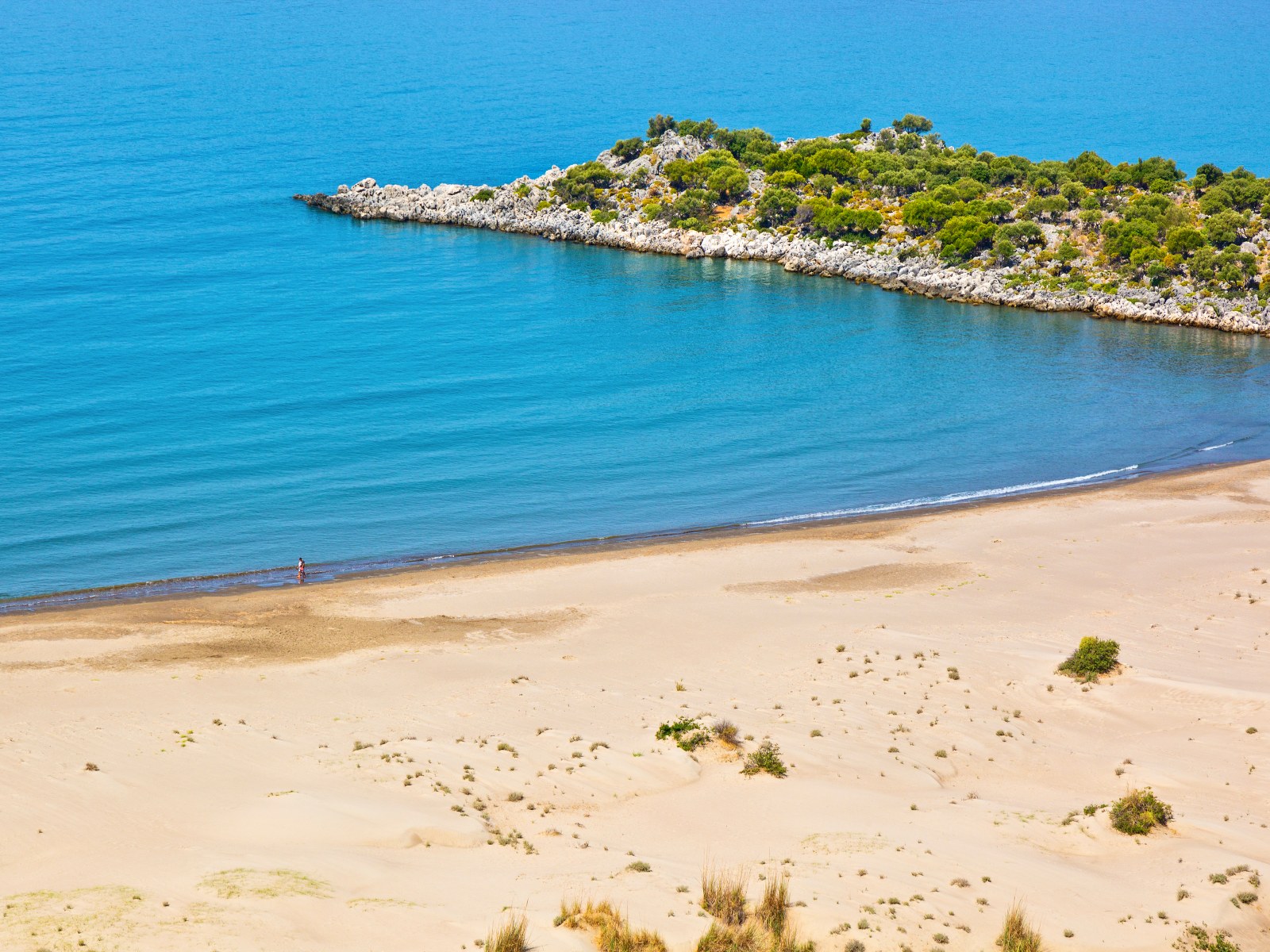
The port of Demre, Cayagzi (Andriake) protects many interesting ancient constructions and is one of the places you should definitely see. Some of these things include the aqueducts that bring water to the city from miles away, an agora which is known as plakoma and surrounded by shops with a cistern in the middle, and to the west of here, a seven-chambered grain storage house with reliefs on it, and berths for ships nearby. It is up to you how much more you want to see and explore.
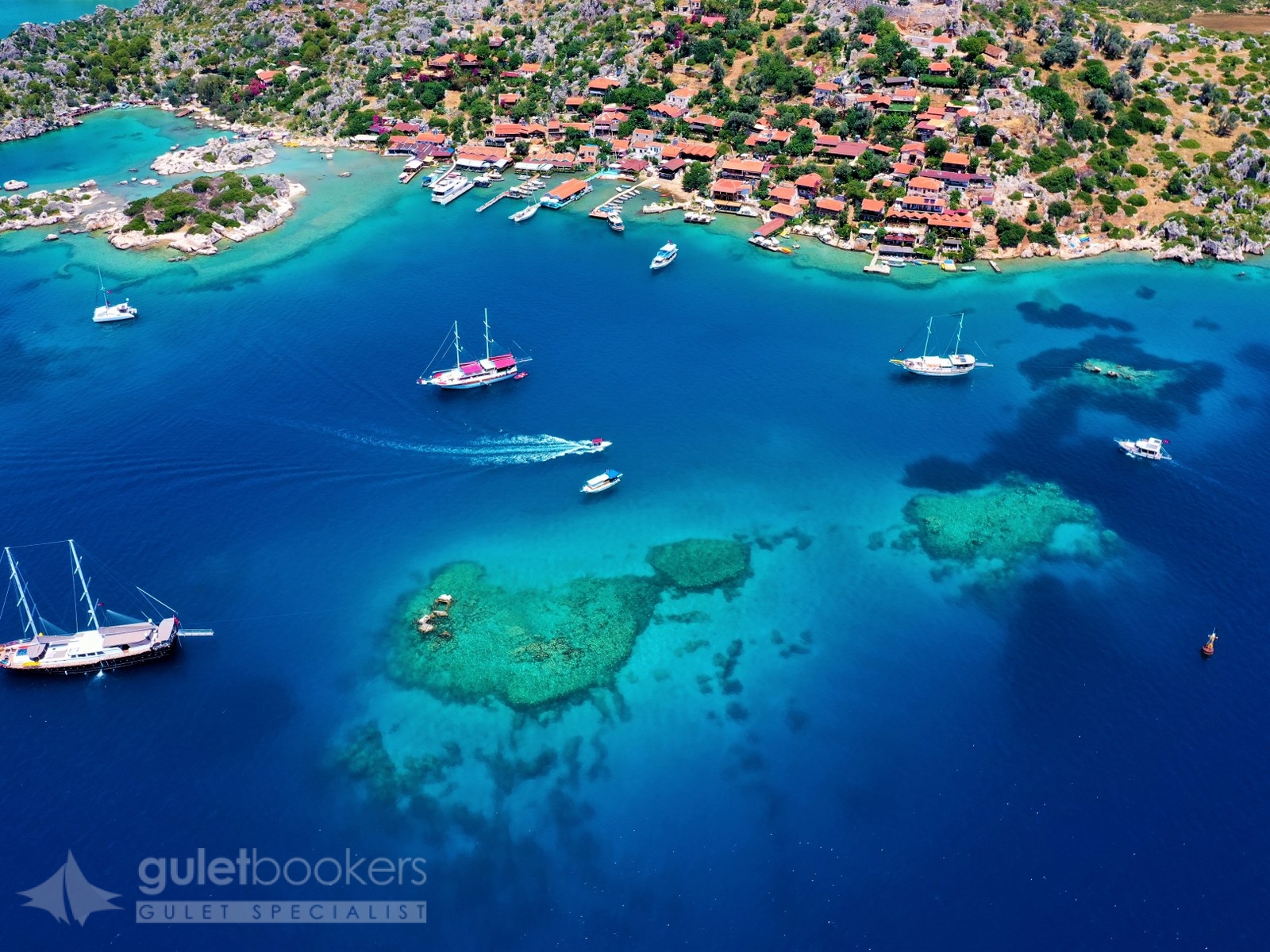
Andriake/Kale is in the area known as Limanagzi (harbor entrance) and is the port area of the town of Myra. On the walls of the granary that survives today, there are reliefs depicting the dream of Heraklion who worked here in the 5th century. Moving inland towards the ancient town of Myra, you can see aqueducts, rock tombs, city ramparts, and remains from Byzantine and more recent times, all spread over a wide area.
Myra/Kale is generally accepted as the home of Santa Claus, and the St Nicholas Church here receives many visitors. St Nicholas was born in Patara and was the Bishop of Myra in the 4th century. He died in Myra and was buried in the church
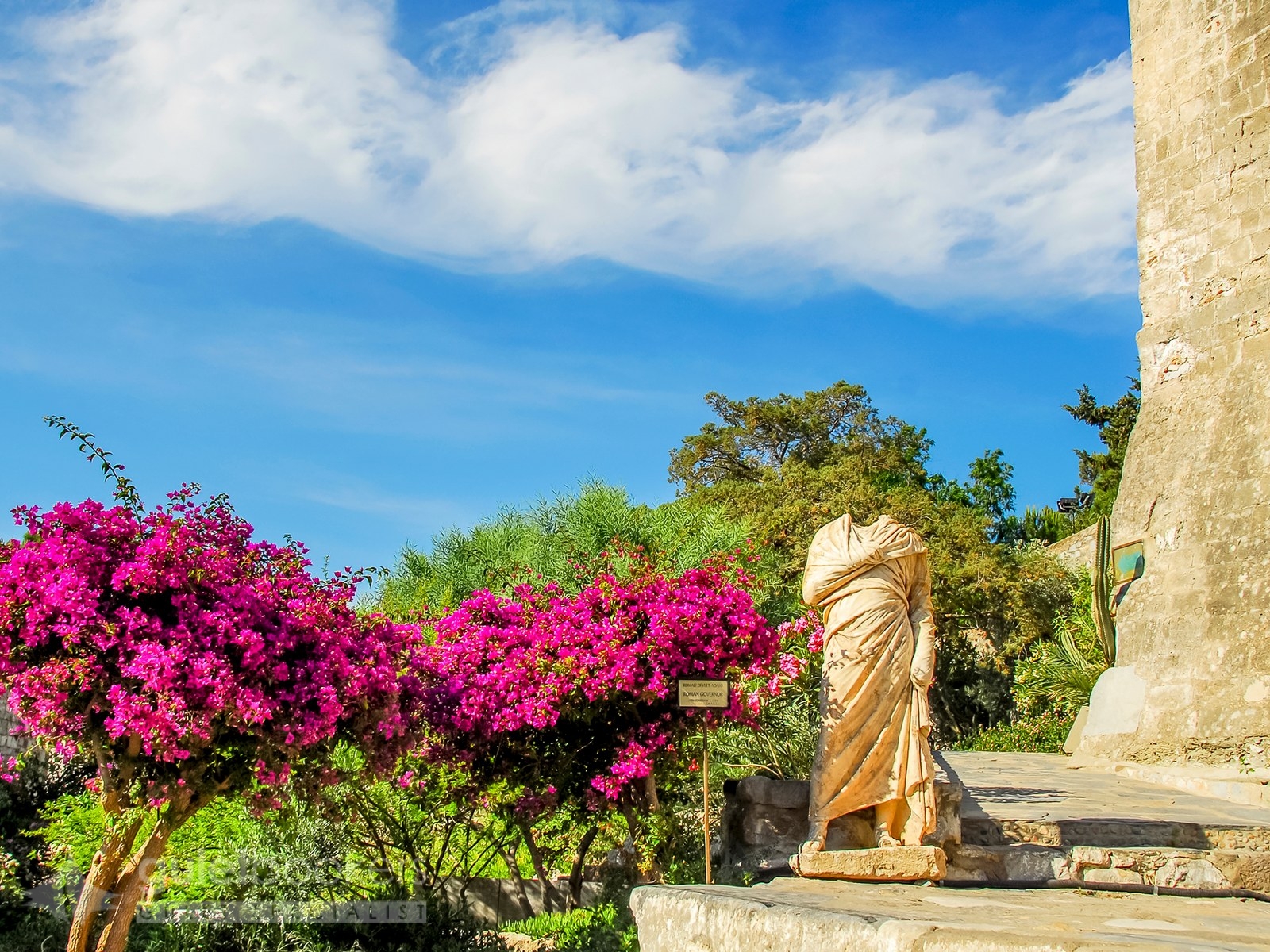
To get to Uluburun, where one of the world’s oldest shipwrecks dating from 3200 years ago was discovered is a tricky requiring patience along the rocky coast by walking. But, Yachts/boats/gulets can moor to stay overnight here along to the charter period. Place is another beautiful stopping point for the blue cruise lovers. A whole 11 years and 10,000 dives were realized in bringing the boat to the surface. It has proved a great help in understanding the Late Bronze Period, and along with the original artifacts therein it can be seen at the Bodrum Underwater Archaeological Museum.
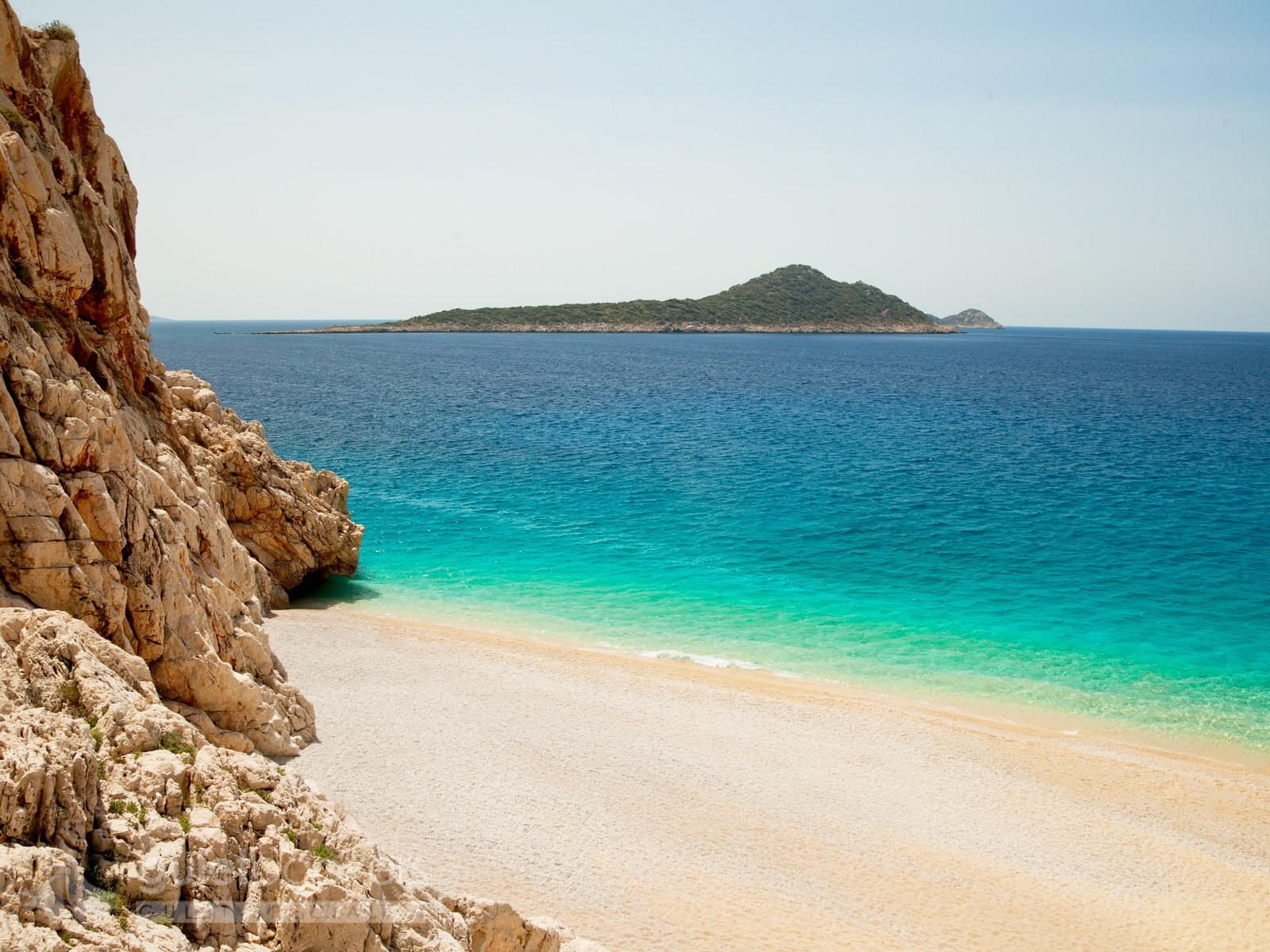
In the entrance of the wide Kalkan Cove, there are the islands of Yilan (Snake) and Sican (Rat) forming the Islands of Catal (Fork). Yilan Island drops into the sea with great steep rocks, while Sican is more suitable for anchoring and swimming. Daily or Charter boats/yachts stop here either on the way from Kalkan or on the return to Patara.
From Kalkan, there is an opportunity to visit Saklikent (Hidden City) that is only for 40 minutes by driving.
Kaputas Beach and Mavi Magara (Blue Cave) between Kalkan and Kas are great places for enjoying the crystal clear waters of the Mediterranean and seeing one of the best caves in the area.
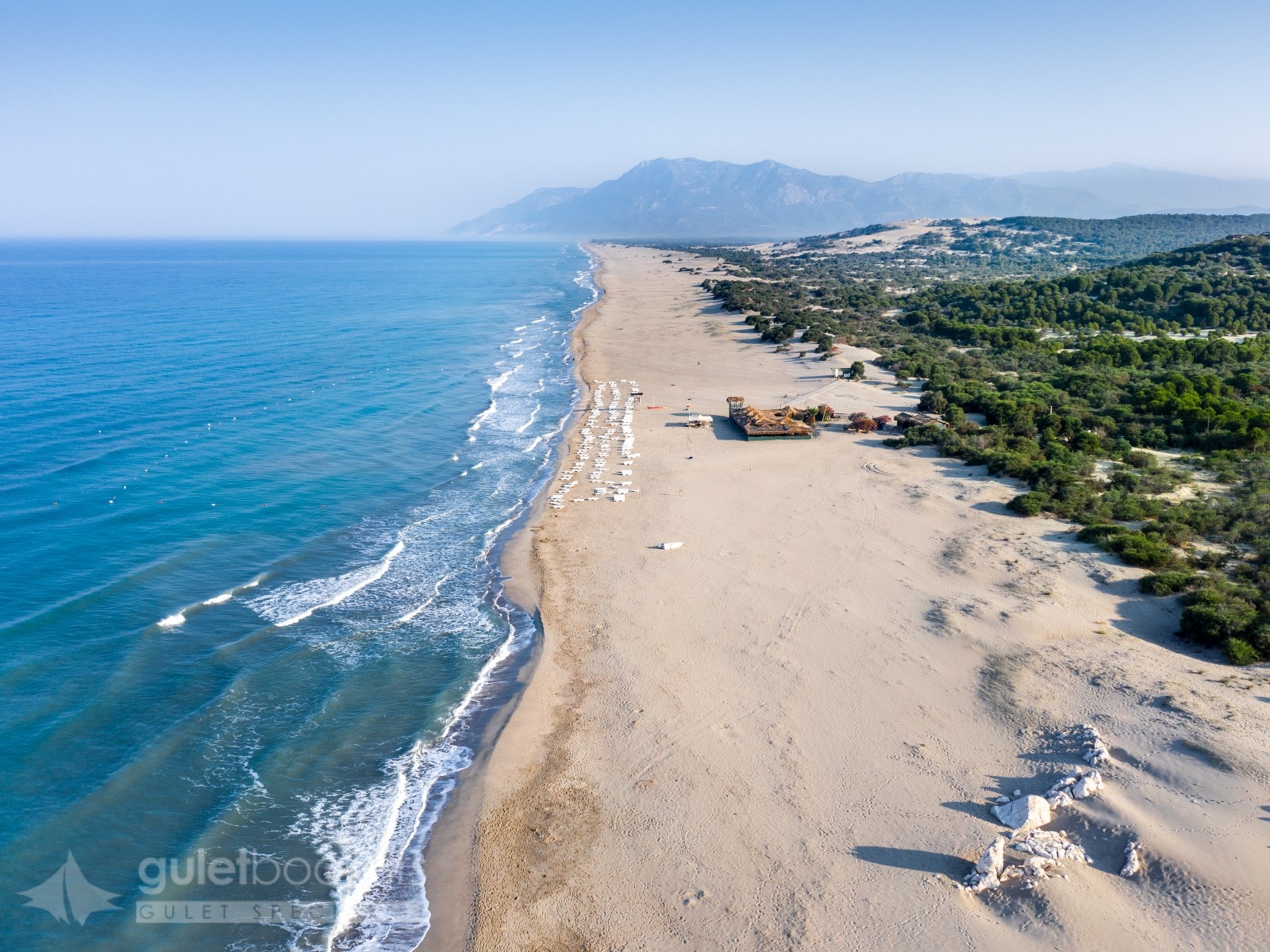
Patara beach is a seven kilometers long beach. Both the beach and the bottom of the sea are of very White sand. Around the center of the beach, the Esen Stream flows into the sea. The beach is an egg-laying ground for the Carreta Carreta sea turtles. This area is covered by an environmental protection order. You can visit the ancient cities of Letoon and Patara right behind the beach. It is pleasant to have a horse-ride on the beach. Four kilometers inland there is the village of Gelemis where you would have plenty of options restaurants and shops.
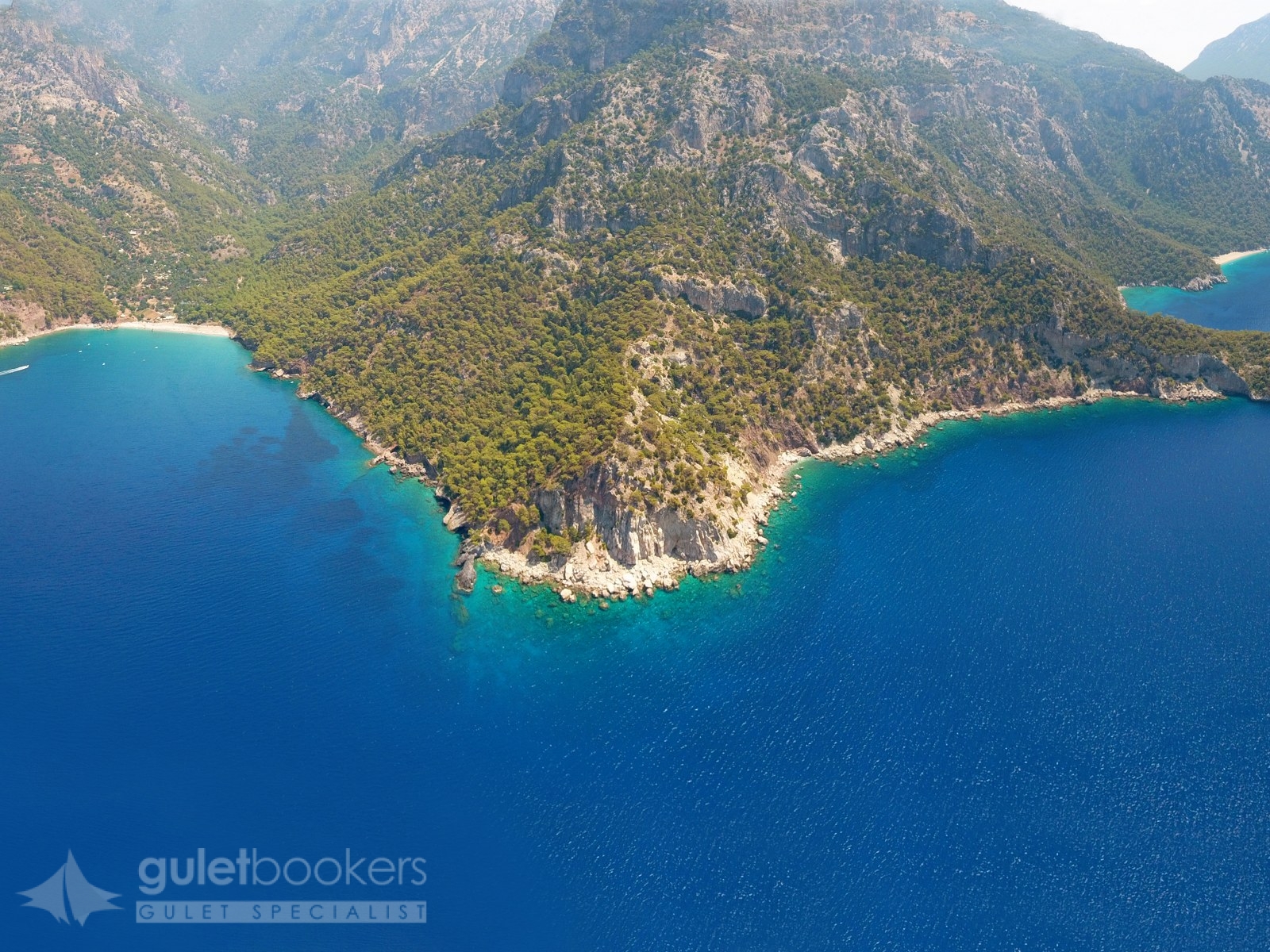
Kabak Bay is a very close place to Butterfly Valley. So, it is possible to see here the famous Jersey Tiger Moth butterflies coming from the valley. When your eyes have got used to every conceivable shade of green and can distinguish between them the blue of the sea it is much more striking. There is no sound except for the relaxing sounds of the lapping waves and the chirping of birds. And this place gives you a great opportunity to at the prospect of relaxing and swimming in the pristine sea.
Cennet (Heaven) Cove will seduce you with its clear and beautiful sea with untouched nature. As it is understood from the name of the place, the view is stunning and you don’t want to leave from here. There is a narrow beach in this bay which has a very big forest on the back. Cennet bay has a camping facility here for those who come to visit this place daily or want to camp. Because of this virgin nature; it is forbidden to make a fire. This magnificent cove is also a stopping and camping area for those who have a Lycian Way tour. It is a very suitable place to moor by your yacht and stay overnight intertwined with nature.
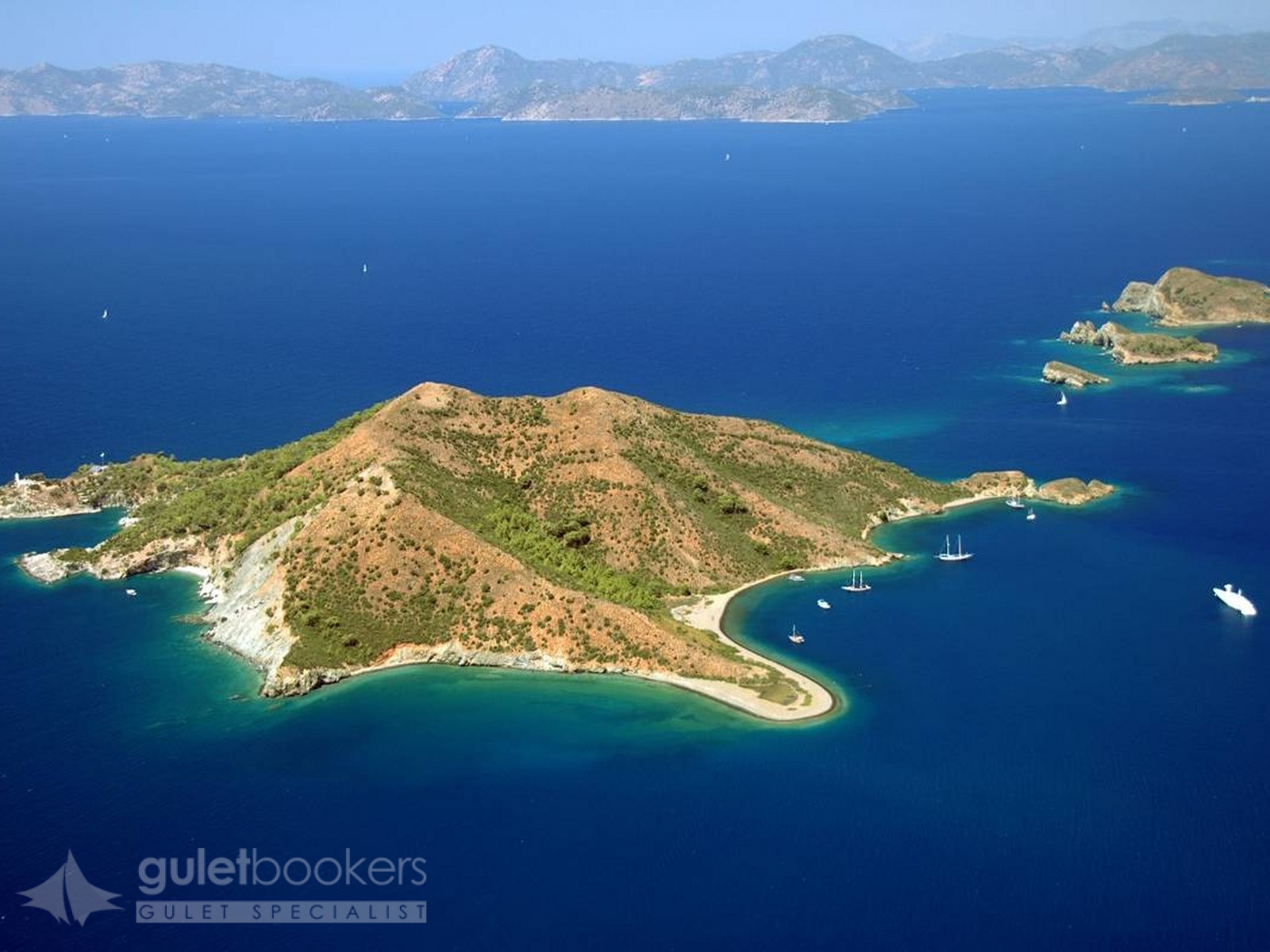
Kizilada (Red Island) was so named as the sand and gravel on the beach take on a reddish hue at sunset. On the island, there is no building other than a lighthouse. Since its east side is closed to waves it is suitable for anchoring and swimming.
Send Enquiry Fethiye – Kekova – Fethiye – 7 Nights Cruise
This itinerary is only bookable for private charters. If you are interested in a cabin charter, please contact us for more information.
Guletbookers is the independent gulet charter company located in Bodrum - Turkey and dedicated to giving you
the best gulet charter possible from the widest choice of gulets possible.
Get in touch via WhatsApp for Seamless Communication.
Talk to our experts and browse through more yachts.






